2 Week Notice Resignation Letter Template
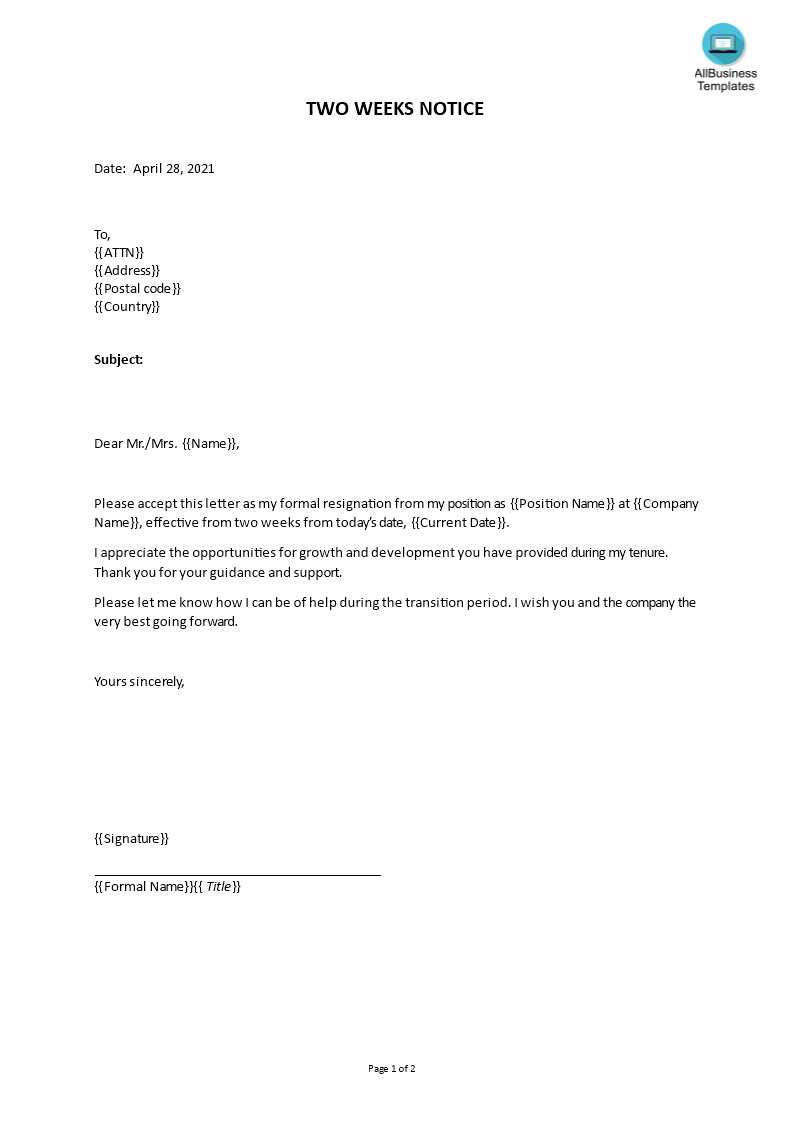
Leaving your current position in a professional manner is essential for maintaining a positive relationship with your employer and ensuring a smooth transition. Crafting a formal message is the best way to handle this step and avoid any potential misunderstandings. The process may seem daunting, but a clear and respectful approach will help you depart on good terms.
Being clear, concise, and polite is key when informing your employer of your decision to move on. It’s important to express gratitude for the opportunity and to outline your intended departure in a way that reflects your professionalism.
While there are various ways to approach this, having a standard structure in place can save you time and ensure that you cover all necessary points. This guide provides insights into how to create a message that reflects your respect for your current role and organization while making the transition as seamless as possible.
Understanding the Importance of a 2 Week Notice
Leaving a position is a significant decision that requires careful thought. Properly informing your employer of your departure is essential for ensuring a smooth exit and maintaining professionalism. A well-structured message serves as an important communication tool that helps manage expectations for both you and the company.
Why a Standard Time Frame Matters
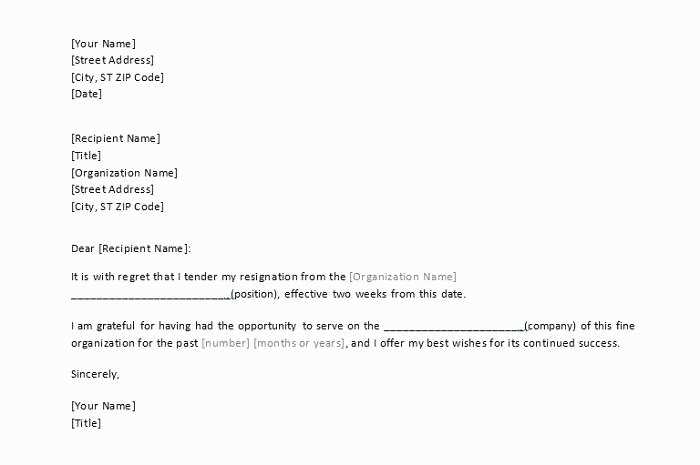
Providing a clear indication of when you will be leaving gives your employer ample time to make adjustments. It shows respect for the company and demonstrates your ability to manage the transition effectively. The time frame allows for proper planning, such as hiring a replacement or redistributing your tasks.
Benefits for Your Professional Reputation
Departing on good terms is crucial for future opportunities. By adhering to established norms, you leave a positive impression that can benefit you later in your career. Consider these key advantages:
- Positive References: Employers are more likely to provide glowing recommendations when you leave on a positive note.
- Professional Relationships: Maintaining good connections with your colleagues and superiors can open doors for future collaborations.
- Respectful Transition: It gives the company enough time to plan and ensures your departure does not disrupt daily operations.
Ultimately, taking the time to notify your employer properly ensures a smooth transition and helps protect your professional reputation.
How to Format a Resignation Letter
When informing your employer of your decision to leave, it is important to follow a clear and professional structure. A well-organized message not only ensures clarity but also reflects your respect for the company and its operations. Proper formatting allows your employer to quickly understand your intent and plan for the transition.
Begin by addressing the appropriate person, typically your direct supervisor or manager. Use a formal tone throughout the message and maintain clarity in your writing. Ensure that your reason for departure is expressed concisely, while keeping the focus on professionalism.
Consider including the following elements in your message:
- Opening Statement: Clearly state your intention to depart, including the date of your last day.
- Gratitude: Express appreciation for the opportunities you’ve had and the experiences gained during your time with the company.
- Transition Offer: Mention your willingness to assist with the handover process or help train a replacement, if applicable.
- Closing Remarks: Reaffirm your appreciation and end the message on a positive note, leaving the door open for future collaboration.
By adhering to these guidelines, you ensure a smooth and respectful communication process that can help preserve a positive relationship with your employer.
Key Elements to Include in Your Letter
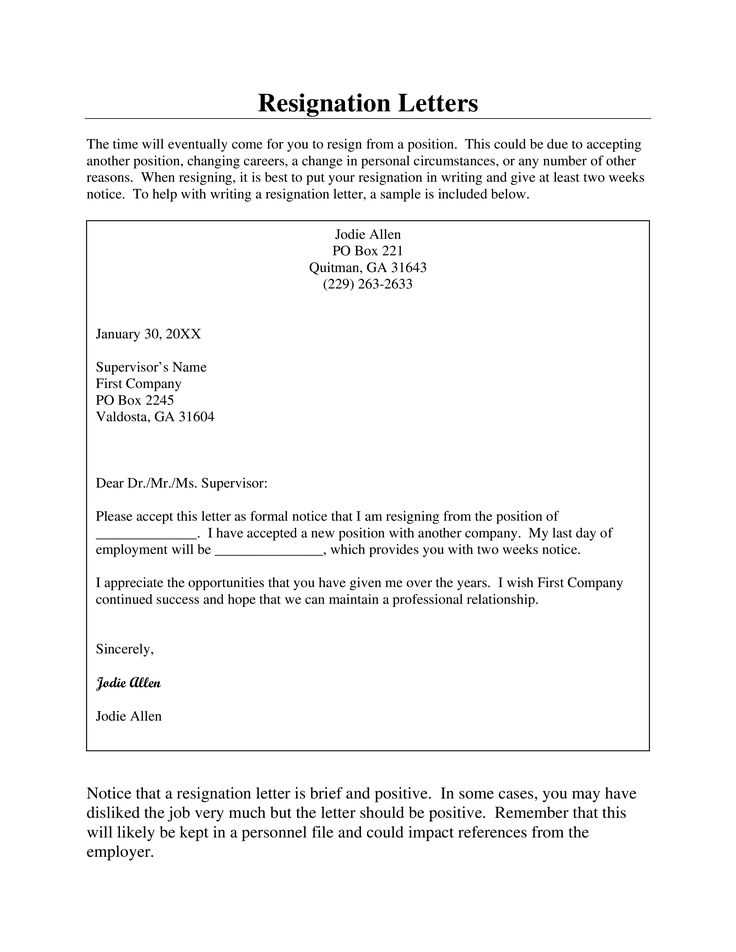
When informing your employer of your decision to leave, there are several important points to address in your message. Including the right elements ensures clarity and demonstrates professionalism, while also helping facilitate a smooth transition for both you and the company.
Here are the essential components to include in your communication:
- Clear Departure Date: State the exact date of your departure to avoid any confusion and give your employer ample time to plan for your exit.
- Gratitude: Show appreciation for the opportunities, support, and experience gained during your tenure with the company. Acknowledge the positive aspects of your time there.
- Reason for Leaving: While optional, providing a brief and respectful explanation of why you are leaving can help maintain transparency and foster goodwill.
- Willingness to Assist: Offer your help in training a replacement or assisting with the handover of your responsibilities. This shows your commitment to ensuring a smooth transition.
- Positive Closing: End your message with positive remarks, expressing your hope for future connections and your desire to maintain a good relationship.
By including these key elements, you demonstrate professionalism and respect for your current employer, which can leave the door open for future opportunities.
Professional Tone for a Smooth Transition
Maintaining a professional and respectful tone in your communication when leaving a position is crucial for ensuring a positive outcome. How you present your departure can significantly impact your relationship with your employer and colleagues, as well as your professional reputation. A thoughtful approach helps maintain goodwill and facilitates a seamless handover process.
Here are some tips for achieving the right tone in your message:
- Be Polite: Always express gratitude for the experiences and opportunities you’ve had. A polite and appreciative tone leaves a lasting, positive impression.
- Stay Positive: Even if your reasons for leaving involve challenges, focus on the positive aspects of your time at the company. This shows maturity and professionalism.
- Keep it Concise: Avoid over-explaining or getting too personal. A clear, to-the-point message is more effective and ensures your intentions are understood.
- Avoid Negativity: Refrain from sharing negative comments or criticisms. Keeping your message neutral and focused on the future maintains your professionalism.
By approaching your departure with the right attitude and tone, you ensure a smooth transition and leave the door open for future professional opportunities.
Avoiding Common Mistakes in Your Letter
When informing your employer of your departure, it’s essential to be mindful of common mistakes that can negatively impact your professional reputation. Ensuring your message is clear, respectful, and properly formatted will make the process smoother and more amicable for both you and the company.
Common Pitfalls to Avoid
There are several common errors that can reduce the effectiveness of your message:
- Not Providing Enough Notice: Failing to give sufficient time for your employer to prepare for your departure can create unnecessary complications. Make sure you allow adequate time for the transition.
- Being Too Vague: Lack of clarity about your final day or intentions can create confusion. Be specific about your departure and responsibilities.
- Burning Bridges: Avoid negative language or complaints about the company, colleagues, or management. Always leave on a positive note, as this preserves relationships for future opportunities.
- Over-Explaining: Providing excessive details about your reasons for leaving is not necessary. Keep it concise and professional.
Maintaining Professionalism
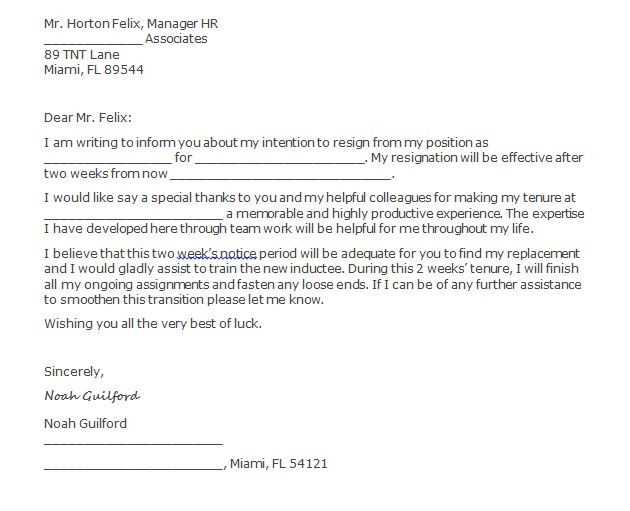
By staying focused on the core message and avoiding unnecessary mistakes, you can ensure that your communication leaves a positive impression and supports a smooth transition out of your role. Professionalism is key to preserving your reputation and relationships as you move forward.
When to Submit Your Resignation Notice
Timing plays a crucial role when it comes to informing your employer about your decision to leave. Submitting your communication at the right moment allows your employer to plan accordingly, ensuring a smooth transition for everyone involved. Understanding when to formally announce your departure can help maintain a positive relationship and demonstrate respect for your current position.
Key Considerations for Timing
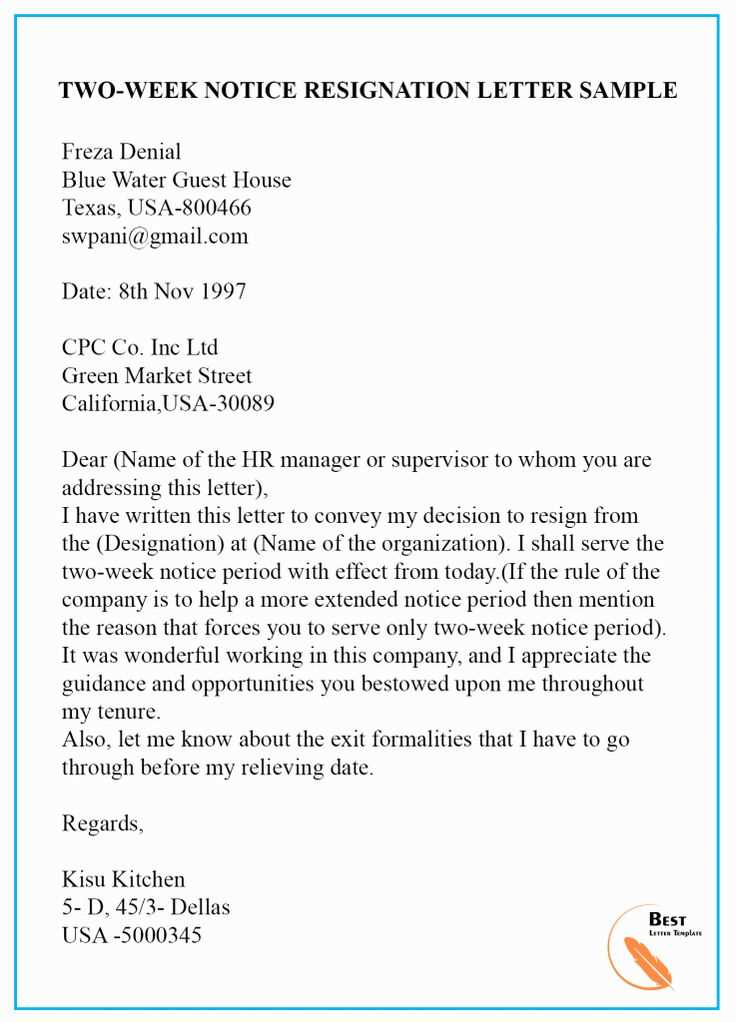
There are several factors to consider when deciding on the ideal time to submit your formal message:
- Company Policy: Review your company’s policies regarding notice periods to ensure you comply with any required time frames.
- Project Deadlines: If you’re in the middle of important tasks, consider how your departure might impact the team. Providing enough time for handover shows responsibility and consideration.
- Personal Circumstances: Take into account any personal or professional reasons that may influence your timing, such as your next job start date or your current work commitments.
Ensuring a Smooth Exit
By submitting your departure announcement with enough lead time, you allow your employer to make necessary arrangements, whether that means finding a replacement or redistributing your responsibilities. Proper timing also ensures that you leave on good terms, preserving a professional image and keeping doors open for future opportunities.